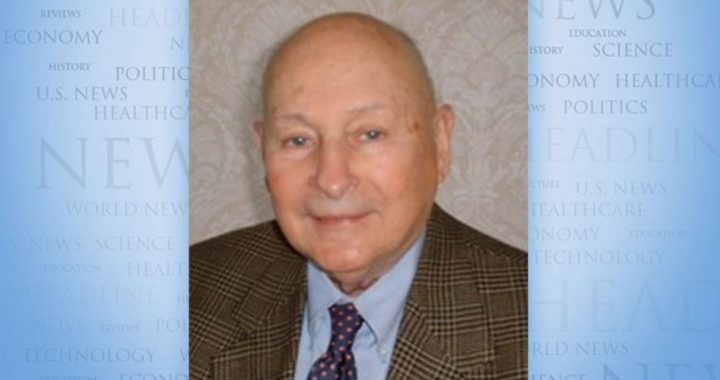
In the first part of this article we wrote about crimes committed by the educators against individual children. But these same educators are also guilty of crimes against the nation. Indeed, back in 1983, the National Commission on Excellence in Education produced its long-awaited and by now totally ignored report entitled “A Nation at Risk.” It was chaired by David P. Gardner and included such prominent members as Nobel prize-winning chemist Glenn T. Seaborg; A. Bartlett Giamatti, President of Yale; Gerald Holton, Professor of Physics at Harvard; and Annette Y. Kirk, wife of conservative author Russell Kirk. The most famous statement in the report accused our educators of outright treason. It said:
If an unfriendly foreign power had attempted to impose on America the mediocre educational performance that exists today, we might well have viewed it as an act of war. As it stands, we have allowed this to happen to ourselves.
This harsh indictment was handed down 29 years ago, and the schools have only gotten worse. Dumbing down an entire nation is certainly a crime of such magnitude that it is barely understandable. What kind of Americans would have dreamed up such a plan and callously implemented it, knowing full well that it would undermine the nation’s economic and cultural health as well as inflict untold mental suffering on millions of Americans who are now adults trying to cope with the handicaps their schools gave them?
Six years later, on May 3, 1989, Secretary of Education Lauro Cavazos released the Education Department’s sixth annual report. The news was grim: The high-school dropout rate was up again; SAT and ACT scores were still far below their 1960s peak. The dropout rate in the schools of Washington, D.C. was 44.5 percent. Cavazos remarked quite bluntly:
We are already spending more money per student than our major foreign competitors, Japan and Germany. And yet our students consistently fall behind the competition in comparative testing. Looking at virtually every qualitative measure — college entrance exams, graduation rates, the National Assessment of Educational Progress, and international assessments — we see our students performing minimally, lacking the advanced skills needed to succeed. … We must do better or perish as the nation we know today.
“We must do better or perish as the nation we know today.” Those were the somber words of the Secretary of Education. But he did not identify the cause of the problem: the deliberate dumbing-down of the nation by its educators.
Three years later, the National Assessment of Adult Literacy (NAAL) reported that more than half the adult population in America was functionally illiterate, despite the fact that an overwhelming majority of these adults had attended American public schools at great cost to the taxpayer.
According to this 1992 report, the most difficult tasks that an estimated 90 million adult Americans could perform included calculating the difference in price of two items and filling out a Social Security form. These adults could not write a brief letter explaining an error on a credit-card bill, figure out a Saturday departure on a bus schedule, or use a calculator to determine the difference between a sale price and a regular price.
According to the report, some 40 million American adults earned a score between 0 and 225 on a 500-point scale, meaning that they had only the most rudimentary reading and writing skills. And most of the individuals in this group were supposed to benefit most from free, compulsory public education. Instead, they were its saddest victims destined to brutal lives in the underclass.
One-third of all adults performed at the middle level (scoring 276 to 325). Only about 20 percent — 34 to 40 million — scored high, handling challenging tasks that involved complex documents and background information.
What effect has this poor education had on our economy? According to a spokesman for the National Alliance of Business, it is not unusual for employers to “reject three out of four applications because they cannot read or write well enough to hold entry-level jobs. Half the applications are thrown in the trash.” Businesses estimate they lose between $25 billion and $30 billion a year nationwide in lost productivity, errors, and accidents attributable to poor literacy.
Indeed, Craig Barrett, CEO of Intel Corporation, told USA Today (11/8/01):
The educational system hasn’t changed in the past century, and it hasn’t recognized that there is international competition. It hasn’t really recognized that our university system is popular with graduate students from foreign countries because it’s the best in the world. More than 50% of the degrees in engineering are granted to foreign nationals. It hasn’t recognized that, very methodically and consistently, what you are doing is dumbing down the U.S. citizenry and educating the rest of the globe; it hasn’t fully recognized that the standard of living is going to be dependent on the quality of the workforce.
What was the government’s reaction to this shocking NAAL report? President George H.W. Bush’s brainless Education Secretary Richard W. Riley declared: “This should be a wake-up call for all Americans to consider going back to school and getting a tune-up.”
A tune-up? What these Americans had undergone in their public schools required more than a tune-up. And believe it or not, George H.W. Bush had been elected as the “education President.” Of course, no one in the government dared to reveal the true cause of the problem. It took a courageous private citizen, Charlotte Iserbyt, a senior policy advisor in the Office of Educational Research and Improvement (OERI) of the Education Department in Reagan’s first term, who became a whistle-blower and provided us with documentary proof of the dumbing-down process. She published copies of all the documents she found in the files related to the dumbing process in a mammoth, privately published book in 1999, The Deliberate Dumbing Down of America. All of this was accomplished in the Clinton years.
In that book, Iserbyt traced the development of the dumbing-down philosophy and implementation from 1902 to 1999. Her book was bought by over 40,000 people, but received no attention from the liberal media or the education establishment. Yet it is the most powerful indictment of the educators who still control the public schools.
In 2003, the National Assessment of Adult Literacy reported that nothing had changed since their dire report of 1992. Those who were 18 in 1992 were now 29 and in the work force. How many of them were able to achieve their career goals with low literacy skills? The damage had been done in the schools and the young adults were forced to fend for themselves in a culture and economy which rewarded the highly literate, or cognitive elite, with good-paying careers and relegated the semi-literate to mindless jobs flipping hamburgers and pumping gas.
Meanwhile, in 2007 the National Endowment for the Arts issued its own alarming report on the decline of literacy in America, “Reading at Risk.” The survey found that only 30 percent of 13-year-olds read almost every day. The number of 17-year-olds who never read for pleasure increased from nine percent in 1984 to 19 percent in 2004. Almost half of Americans between the ages 18 and 24 never read for pleasure.
Dana Gioia, Chairman of the Endowment, told a reporter: “This is a massive social problem. We are losing the majority of the new generation. They will not achieve anything close to their potential because of poor reading.” He noted that only a third of high school seniors read at a proficient level, a 13-percent decline since 1992. “And proficiency is not a high standard. We’re not asking them to read Proust in the original. We’re talking about reading the daily newspapers.”
According to the Boston Globe of 11-19-07, “Apparently, things are not much better among college students. In 2005, almost 40 percent of college freshmen (and 35 percent of seniors) read nothing at all for pleasure, and 26 percent (28 percent of seniors) read less than one hour per week. Even among college graduates, prose-reading proficiency declined from 40 percent in 1992 to 31 percent in 2003.”
Dana Gioia, in his Preface to the report, wrote:
For the first time in modern history, less than half of the adult population now reads literature, and these trends reflect a larger decline in other sorts of reading. … [L]iterary reading in America is not only declining rapidly among all groups, but the rate of decline has accelerated, especially among the young. … Advanced literacy is a specific intellectual skill and social habit that depends on a great many educational, cultural and economic factors. As more Americans lose this capability, our nation becomes less informed, active and independent minded. These are not qualities that a free, innovative, or productive society can afford to lose.
But when it came to naming the cause of this literacy decline — the way children are taught to read in our schools — Gioia revealed his own ignorance. He wrote: “There is surely no single solution to the present dilemma, just as there is no single cause.” Had he read Charlotte Iserbyt’s book, or my books, The New Illiterates and NEA: Trojan Horse in American Education, he would have known the cause of our decline in reading. And apparently he never read Rudolf Flesch’s 1955 bestseller, Why Johnny Can’t Read.
Yet, homeschooling parents have shown how to solve the reading problem by teaching their own children to read with intensive, systematic phonics. In other words, we still know how to teach reading in America, in virtually the same manner in which it was done in the days of Noah Webster and his famous Blue Backed Speller. We were once the most literate nation on earth, and we can still become a leader in literacy if we can change the way reading is taught in American primary schools. But that means acknowledging that the dumbing-down of American children is deliberate and that it is a criminal act on the part of the education establishment. And since the whole dumbing-down process also makes our economy weaker and less competitive, it is also treason.
But what politician will stick his neck out and tell the truth about American public education? It is safer to be in favor of nameless “school reform” than to advocate a complete overhauling of the present system. And for those who are not inclined to wait for that overhauling to take place, homeschooling and private schooling are the only answers.
(To be continued.)



